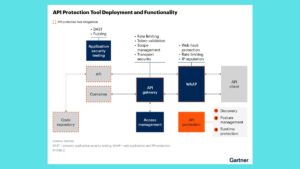19 HR Metrics Examples: Making Data-Driven Decisions in 2024

The Ever Expanding Role of the Chief HR Officer (CHRO)
In 2024, the role of Human Resources (HR) is more data-driven than ever before. With the increasing availability of advanced HR technologies, organizations can now measure and analyze a wide range of HR metrics to make informed decisions. These metrics provide valuable insights into employee performance, engagement, retention, and overall organizational health. Here, we explore 19 essential HR metrics that can help HR professionals make data-driven decisions in 2024.
1. Employee Turnover Rate
The employee turnover rate measures the percentage of employees who leave the organization during a specific period. A high turnover rate can indicate issues with employee satisfaction, culture, or management. Monitoring this metric helps HR identify areas for improvement in retention strategies.
2. Time to Fill
Time to fill measures the average time it takes to fill an open position. This metric is crucial for assessing the efficiency of the recruitment process. A shorter time to fill indicates a streamlined hiring process, while a longer time may suggest bottlenecks or challenges in finding suitable candidates.
3. Cost per Hire
Cost per hire calculates the total expenses associated with hiring a new employee, including recruitment, advertising, and onboarding costs. Understanding this metric helps HR departments optimize their recruitment budgets and identify cost-saving opportunities.
4. Employee Engagement Score
Employee engagement is a key indicator of how committed and motivated employees are. This score is often derived from surveys that assess factors like job satisfaction, alignment with company values, and willingness to go the extra mile. High engagement scores correlate with increased productivity and reduced turnover.
5. Absenteeism Rate
Absenteeism rate measures the average number of days employees are absent from work over a specific period. High absenteeism rates can indicate underlying issues such as workplace stress, health problems, or disengagement. Monitoring this metric helps HR address these issues proactively.
6. Employee Net Promoter Score (eNPS)
The eNPS measures the likelihood of employees recommending their workplace to others. It’s a strong indicator of employee satisfaction and loyalty. A high eNPS suggests a positive workplace culture, while a low score may indicate areas that need improvement.
7. Diversity and Inclusion Metrics
Diversity and inclusion metrics track the representation of different demographic groups within the organization. These metrics include gender diversity, ethnic diversity, and inclusion index scores. They help HR ensure that the workplace is equitable and that diverse perspectives are valued.
8. Training and Development Participation
This metric measures the percentage of employees participating in training and development programs. High participation rates indicate a strong commitment to employee growth and continuous learning. It also helps HR identify areas where additional training may be needed.
9. Internal Mobility Rate
The internal mobility rate measures the percentage of employees who move to new roles within the organization. A high internal mobility rate indicates that the company is effectively developing and promoting talent from within, which can boost employee satisfaction and retention.
10. Offer Acceptance Rate
The offer acceptance rate tracks the percentage of job offers accepted by candidates. A low acceptance rate may indicate issues with compensation, benefits, or the overall attractiveness of the organization. Monitoring this metric helps HR refine its hiring strategies.
11. Employee Productivity Rate
Employee productivity rate measures the output of employees relative to the inputs (such as hours worked). This metric helps HR assess the efficiency and effectiveness of the workforce and identify areas where productivity can be improved.
12. Performance Ratings Distribution
This metric tracks the distribution of performance ratings across the organization. It helps HR identify patterns in performance evaluations, such as whether ratings are consistently high, low, or clustered in the middle. This information can be used to adjust performance management processes.
13. New Hire Turnover Rate
New hire turnover rate measures the percentage of new employees who leave the organization within the first year. A high rate may indicate issues with onboarding, cultural fit, or job expectations. Addressing these issues can improve long-term retention.
14. Compensation and Benefits Satisfaction
This metric assesses employee satisfaction with compensation and benefits packages. Surveys are often used to gather this data. High satisfaction levels are correlated with better retention and engagement, while low levels may require HR to revisit compensation strategies.
15. Employee Wellness Metrics
Employee wellness metrics track the physical and mental health of employees, often through surveys or participation rates in wellness programs. These metrics are increasingly important as organizations recognize the impact of employee well-being on productivity and retention.
16. HR-to-Employee Ratio
The HR-to-employee ratio measures the number of HR professionals relative to the total number of employees. This metric helps organizations determine whether their HR department is adequately staffed to meet the needs of the workforce.
17. Time to Productivity
Time to productivity measures the time it takes for a new employee to reach full productivity. A shorter time to productivity indicates effective onboarding and training processes. This metric helps HR refine these processes to ensure new hires are contributing as quickly as possible.
18. Leadership Development Rate
This metric tracks the percentage of employees who participate in leadership development programs. High participation rates suggest a strong commitment to developing future leaders, which is crucial for long-term organizational success.
19. Employee Feedback Response Rate
The employee feedback response rate measures the percentage of employees who provide feedback in surveys or other feedback mechanisms. A high response rate indicates a culture of openness and communication, while a low rate may suggest disengagement or distrust.
Conclusion
In 2024, HR metrics play a vital role in shaping the strategies and decisions of HR departments. By monitoring these 19 key metrics, organizations can gain valuable insights into their workforce, identify areas for improvement, and make data-driven decisions that drive success. As HR continues to evolve, leveraging these metrics will be essential for staying competitive and fostering a positive workplace culture.







